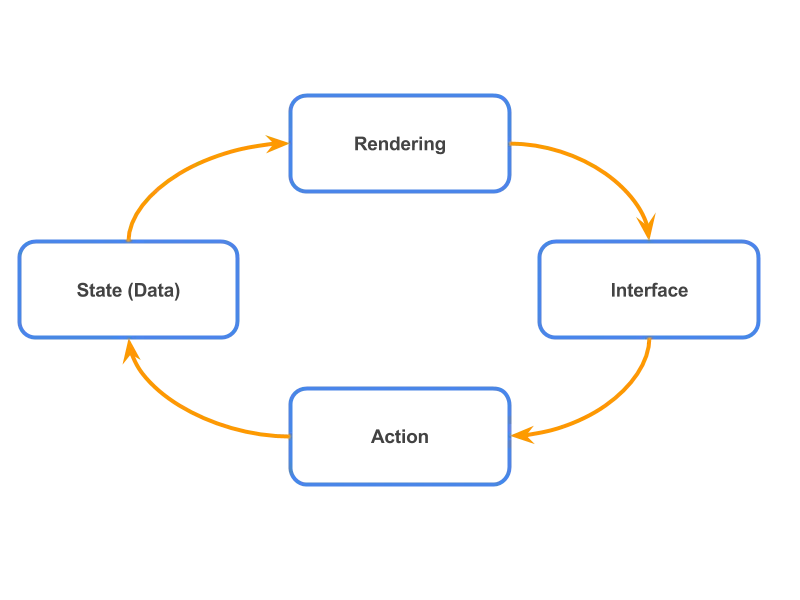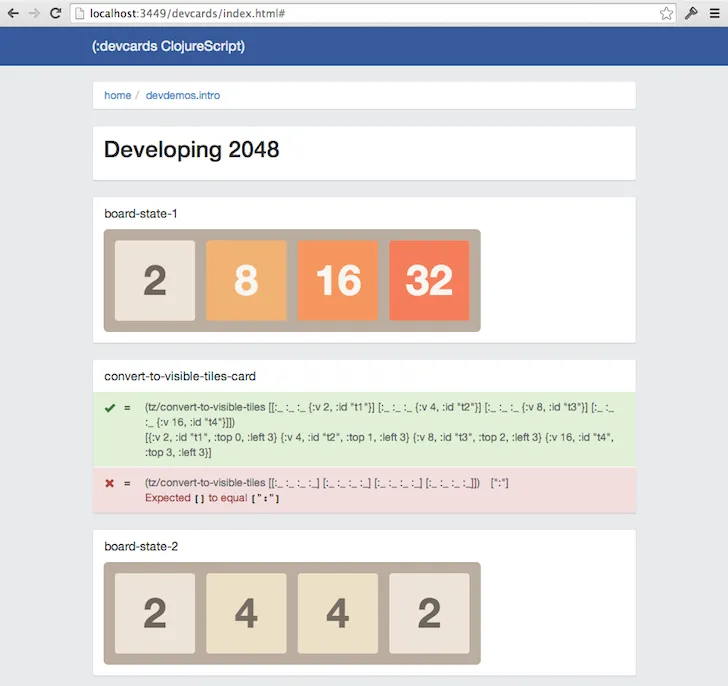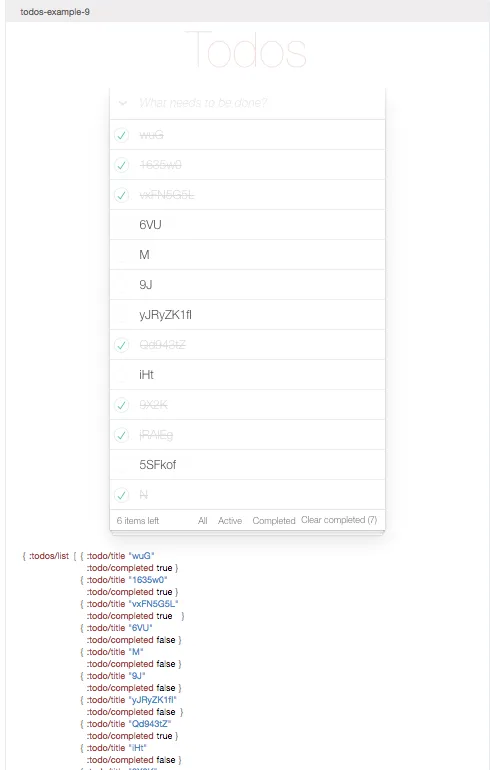TL;DR
Annotating you render functions with clojure.spec lets you generate infinite valid states for your interface that you can visualize with devcards. Click here for a demo.
About frontend development
Having used React and ClojureScript for a while you get used to think about your frontend code in these four broad categories:

Data and Interface are mostly explorative and declarative part of you codebase. You define a data model that suits your business needs. You explore what native calls you need to make in order to show the interface you want.
Action refers to all the code you use to modify the state in response to an external event. As the application grows in complexity, take some time to keep this code clean and you’ll see is going to look mostly functional and easy to test.
My main source of pain, you’ve probably have guessed, is the Render code.
If your job is to eat a frog, eat it first thing in the morning
The fact is, most of this code is virtually untestable. Unless you’re
developing a text-based interface there’s no sane way of checking the
output of your functions is correct. Even if your output is data a
la sablono, are you confident you’ve rendered a button and a text with
the right padding and no overlapping and the correct transparency and so
on?
Here’s how we usually approach the problem: lots of manual testing. Lots of browsing the various screen and changing the app state to see if everything behaves at it should. There must be a better way.
Using a dynamic language has many benefits, but if you can’t easily test
what you return as output at least be very strict about what you accept
as input. Render functions are an excellent place to place your
prismatic/schema or clojure.spec annotations: the more precise you
can be about valid inputs, the more errors you can catch before
rendering.
Ideally your schema annotations compose as your rendering function compose. So if you’ve annotated layout A and B and now you use both of them inside layout C, the latter has a schema that depends both on A and B. This process can bubble up to the root of your application R so that its schema describes all valid inputs for your application.
Here’s an example:
(require '[sablono.core :as sab :include-macros true])
(require '[cljs.spec :as s :include-macros true])
(s/def :todo/title (s/and string? (complement str/blank?)))
(s/def :todo/completed boolean?)
(s/def :todos/item (s/keys :req [:todo/title :todo/completed]))
(s/def :todos/list (s/coll-of :todos/item))
(s/def :todos/showing #{:all :active :completed})
(s/def :todos/view (s/keys :req [:todos/list :todos/showing]))
(defn item [{:keys [todo/title todo/completed todo/editing]}]
(let [class (cond-> ""
completed (str "completed ")
editing (str "editing"))]
(sab/html
[:li {:className class}
[:div.view
[:input.toggle {:type "checkbox"
:checked (and completed "checked")
:onChange #(do %)}]
[:label title]
[:button.destroy]
[:input.edit {:ref "editField"}]]])))
(defn todos [{:keys [todos/list todos/showing]}]
(let [active (count (remove :todo/completed list))
completed (- (count list) active)
checked? (every? :todo/completed list)]
(sab/html
[:div#content
[:div#todoapp
[:header#header
[:h1 "Todos"]
[:input {:ref "newField"
:id "new-todo"
:placeholder "What needs to be done?"
:onKeyDown #(do %)}]]
[:section#main {:style (hidden (empty? list))}
[:input#toggle-all {:type "checkbox"
:onChange #(do %)
:checked checked?}]
(into [:ul#todo-list]
(for [todo (filter (case showing
:completed :todo/completed
:active (complement :todo/completed)
:all identity) list)]
(item todo)))]
[:footer#footer {:style (hidden (empty? list))}
[:span#todo-count
[:strong active] (str " " (pluralize active "item") " left")]
(into [:ul#filters {:className (name showing)}]
(for [[x y] [["" "All"] ["active" "Active"] ["completed" "Completed"]]]
[:li [:a y]]))
[:button#clear-completed (str "Clear completed (" completed ")")]]]])))If you use clojure.spec for your annotations like in the example you
also get test data generation for free. This means you can generate many
valid inputs for any rendering function (including the root of your
application) and repeatedly check it doesn’t break.
(deftest canary
(doseq [input (map first (s/exercise :todos/view))]
(todos input)))This is already gives you some confidence, but ultimately you want to see your UI in action.
If your job is to eat two frogs, eat the big one first
Sometimes a change in a shared render component can have disastrous effects on your entire application, messing up alignments, paddings and other visual properties. Sometimes these errors are quite hard to catch because they only happen under certain circumstances (e.g. in a list of more of 100 elements, or the customer name is less than 3 characters, or the header image is missing).
That’s why I think is vital for a project to embrace something like
devcards early on and give
visibility to all these possible mistakes. For example if you are
developing a component that renders a list of todos, why not keeping
open a window that renders that component simultaneously with different
states, say a list of 0, 1, 10, 100 and 1000 elements. As you change the
code you should be able to quickly spot if you’re introducing
regressions on one of these states.

Example from devcards
This is exactly how you would exercise your function in a unit test,
using certain inputs to verify edge conditions, except in this this case
is a visual test. Now, we all know generative testing is a great
complement to your unit tests, so why not make use of both? If you can
generate valid inputs from your clojure.spec annotations, then throw
them to your application and see how it renders them.

One of the many examples with generated data
Have a look here for the full list of generated states (and here is the source code). As you develop or change your renderer this is another useful tab to keep open to see the impact of you changes.







